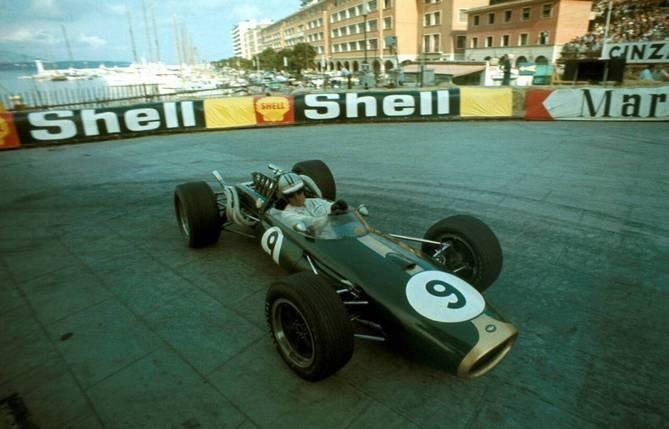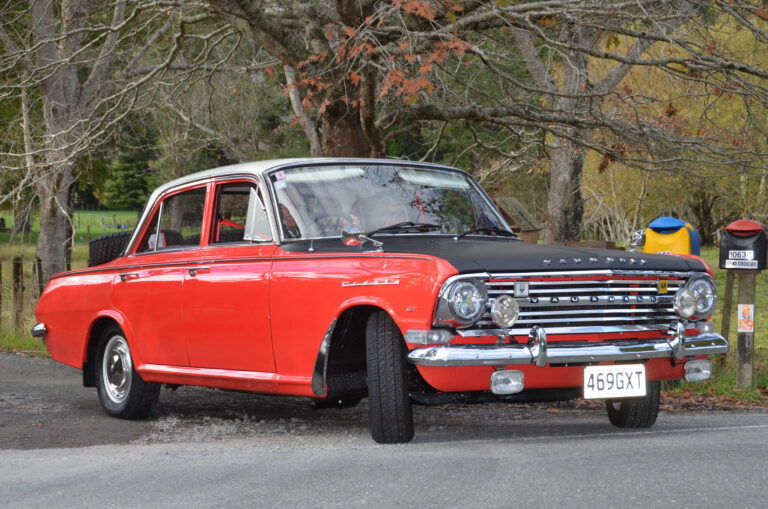The rising standard of car preparation is only adding impetus to the classic racing revival
By Quinton Taylor, photography: Ewan McPherson, Wayne Perkins, Donn White, and New Zealand Classic Car Archives
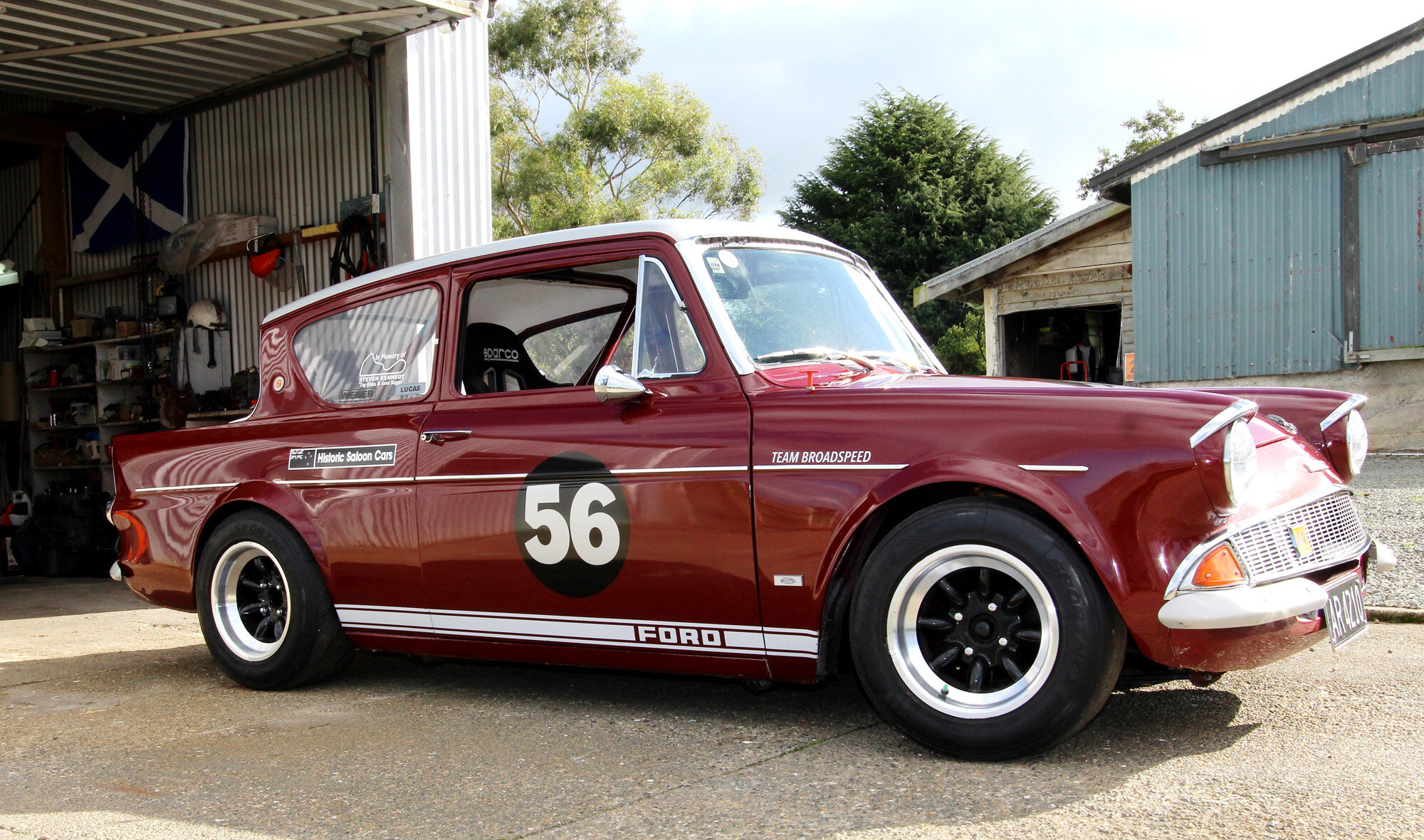
Long-time Southland motor racing enthusiast Ewan McPherson decided a few years ago while attending a motor racing meeting that many of the cars competing were quite rough and it was time someone set a standard for preparation of cars aiming for glory.
“I thought there is no reason why you can’t take it to the track and have it looking smart. At the time I was following classic racing and there was nothing much that was really sharp. One or two Mini 7s that were really tidy and I thought ‘Why can’t you do something like this and try and set a standard?’”
Perhaps his thinking struck a chord with the common consciousness as evidenced by the upward trajectory in the standard of preparation of many more recent classic racers. In 2014, he had his chance to make an impression when he bought a Ford Anglia and the result was one of the best looking small sedans in classic racing.

“I purchased the Anglia from Peter Ward in Christchurch for $2500 and started it in 2014. It sat up in the shed for about 18 months and I kept looking at it to see if it was worth doing. The more I looked at it the more I could see it had been belted around a bit. The door pillar on the right-hand side looked ugly so I got Dallas Ryan to look at it. He was working for Gordon Officer Panel Beating at the time so I stripped it out and put it on the chassis straightening machine, and it came out pretty well. Rust wasn’t an issue really as it was in pretty good shape.”
With the bodyshell up on a rotisserie, work progressed on the shell and then Aaron Geange was let loose on the paintwork.
“The idea for the car’s colour scheme came from Ralph Broad, of Broadspeed Engineering [UK]. I just liked the colour. It never started out to be a Broadspeed car and it still isn’t. It was something to aspire to I suppose. He was very particular and presented his cars very nicely.”
Ewan decided that the Anglia would keep much of its interior trim as well, accounting for the attractive matching door cards and a nicely filled out race interior complete with roll cage. The next decision was what motor and gearbox to use in the Anglia to keep it as much as possible as they were raced.
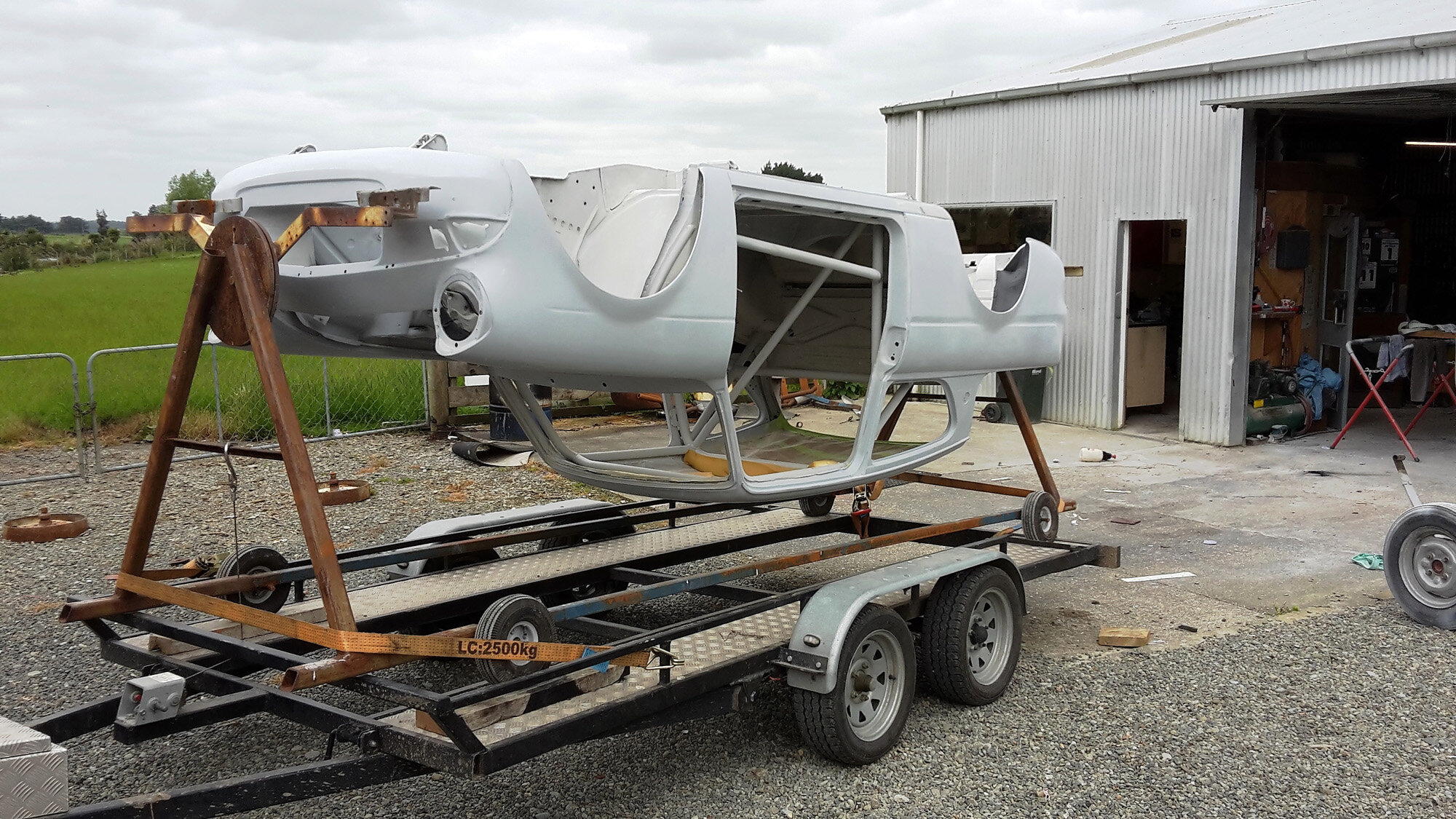
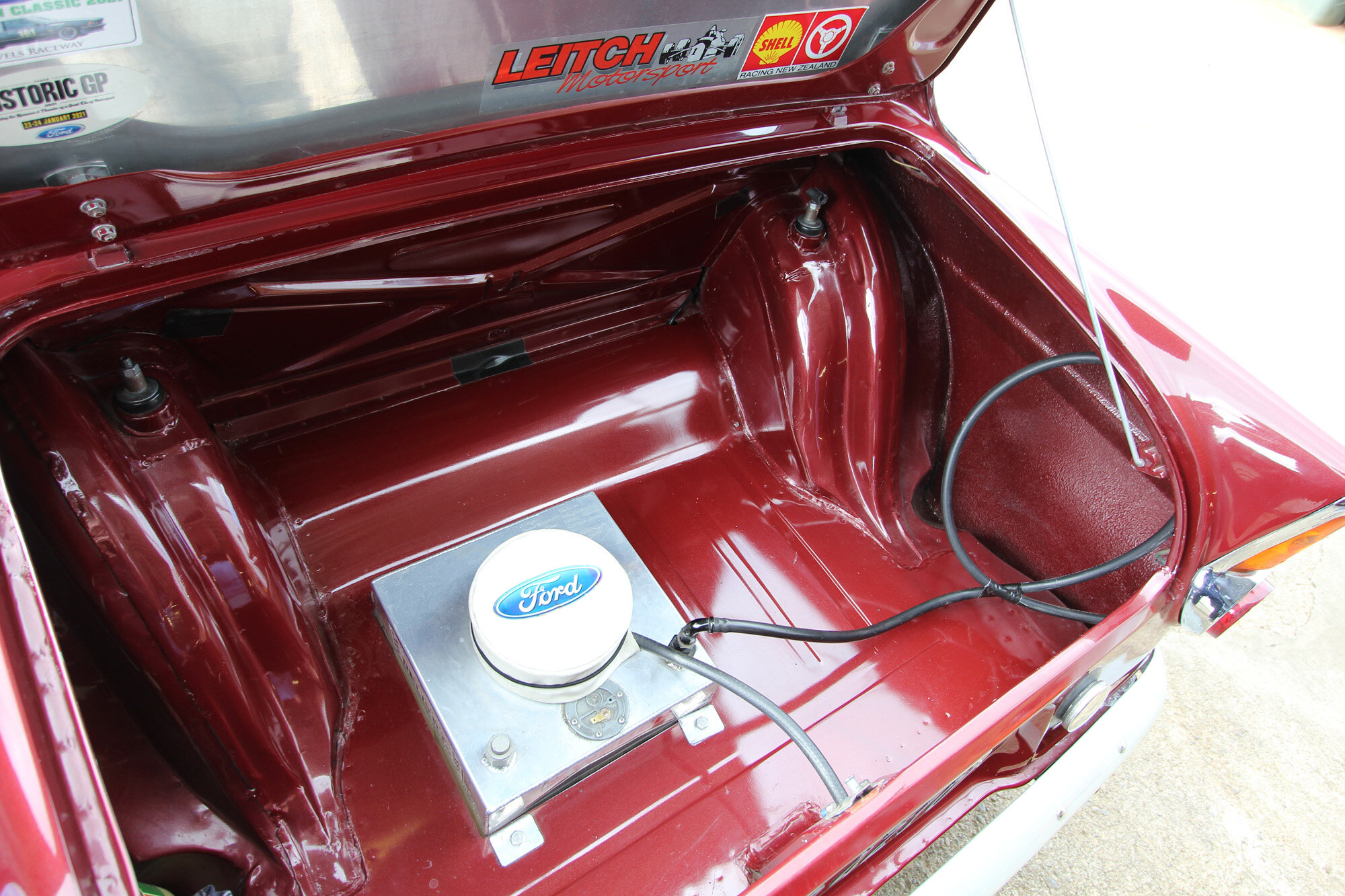
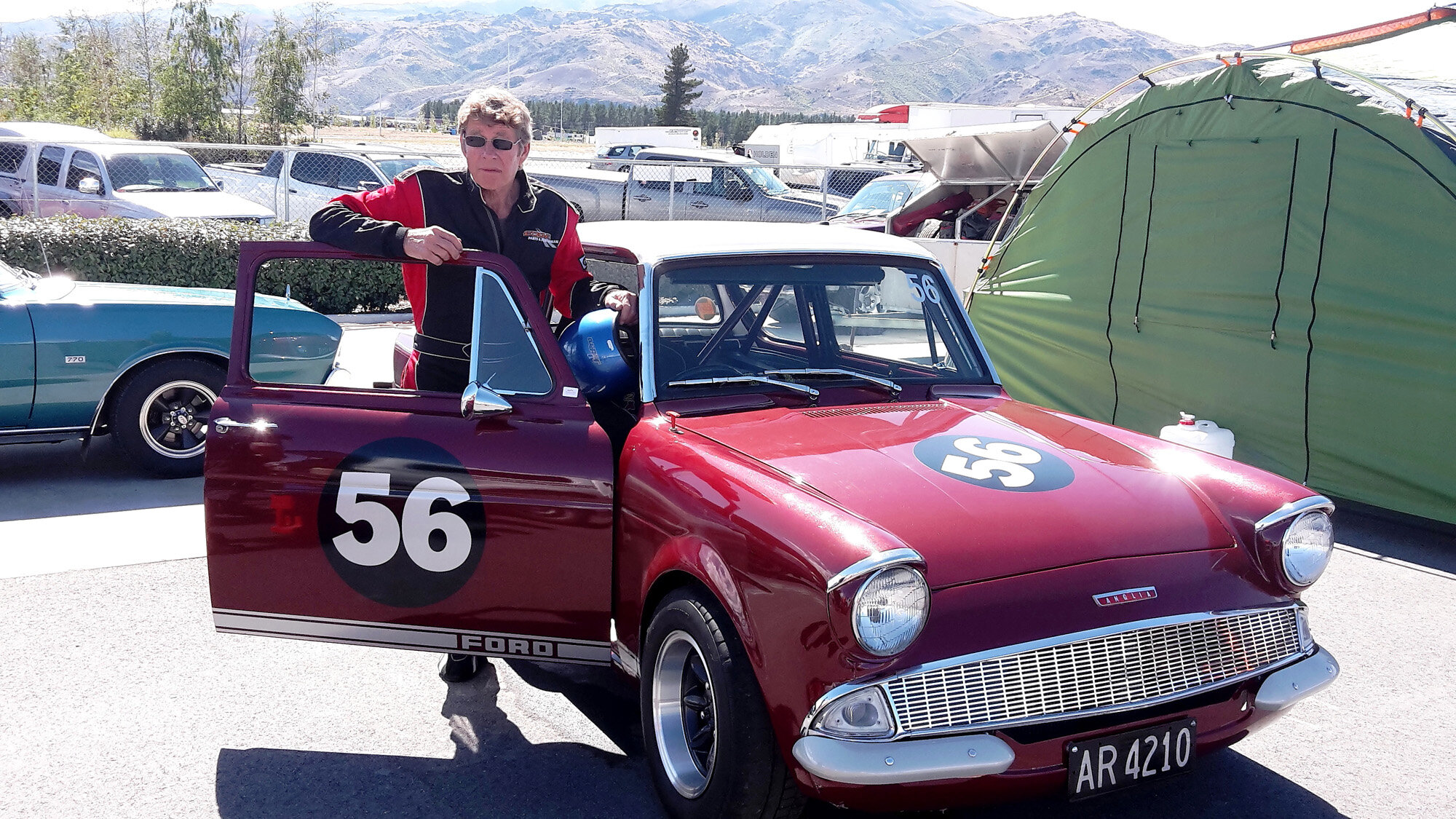
“The old story was you put a 1500cc block in it back in the day but even back in 2014, lots of stuff would turn up that was 1500 in the day and now had a 1600. I decided on a 1500 block with 1600 crank and rods in it, so that’s what it has got in it now.”
His first engine was not all that inspiring and the second destroyed itself when a camshaft let go, so when it came time to build the third engine, Ewan decided to make it a detailed re-build using some professional skills. The engine block was sent to HPE Automotive Services in Christchurch for all machining work on the engine, then it returned home for assembly by Ewan.
The car was on its way to becoming one of the quickest Ford Anglias racing in New Zealand, capable of surprising other more fancied kit.
“The gearbox is a MK1 Cortina case and fitted with a Quaife dog-box with a big 2.5 ratio gear set. It’s still a four-speed driving back to an Anglia 4:1 1 rear end. Up front it has 315 Consul struts, with Cortina disc brakes and Cortina drums at the rear. There’s nothing else really fancy.”
When building the Anglia he collected parts at quite cheap prices, especially the now hard to find Ford Consul 315 struts. They have a much stronger bottom stub axle arrangement than on a Cortina and were a popular modification for racing Anglias.
“I built my own sway bars and the suspension parts. There’s heaps of information on-line about making cars handle well and suspension engineering intrigues me.”
Eighteen months on the car was ready for its first circuit test. Checking his records, Ewan says the day of reckoning was 22 August, 2015, straight from the workshop to its first track test at Teretonga. Endurance racing driver Brendon Leitch went along to advise on suspension settings and share some tips on navigating the circuit.
“Brendon is the only other one who has driven it. My best time at Teretonga is 1m 13.5s at the Speedfest. Unofficially, Brendon did a 1m 14.5s, then we did a bit of re-setting and in five laps he was getting down to 1m 11s! And that’s having never been in the Anglia’s driver seat before. He showed me videos of him driving and compared them with a video of me driving and what I should be doing. After a couple of hours training I took a full second off my time. It certainly improved my driving. I would love to get another session with Brendon.”
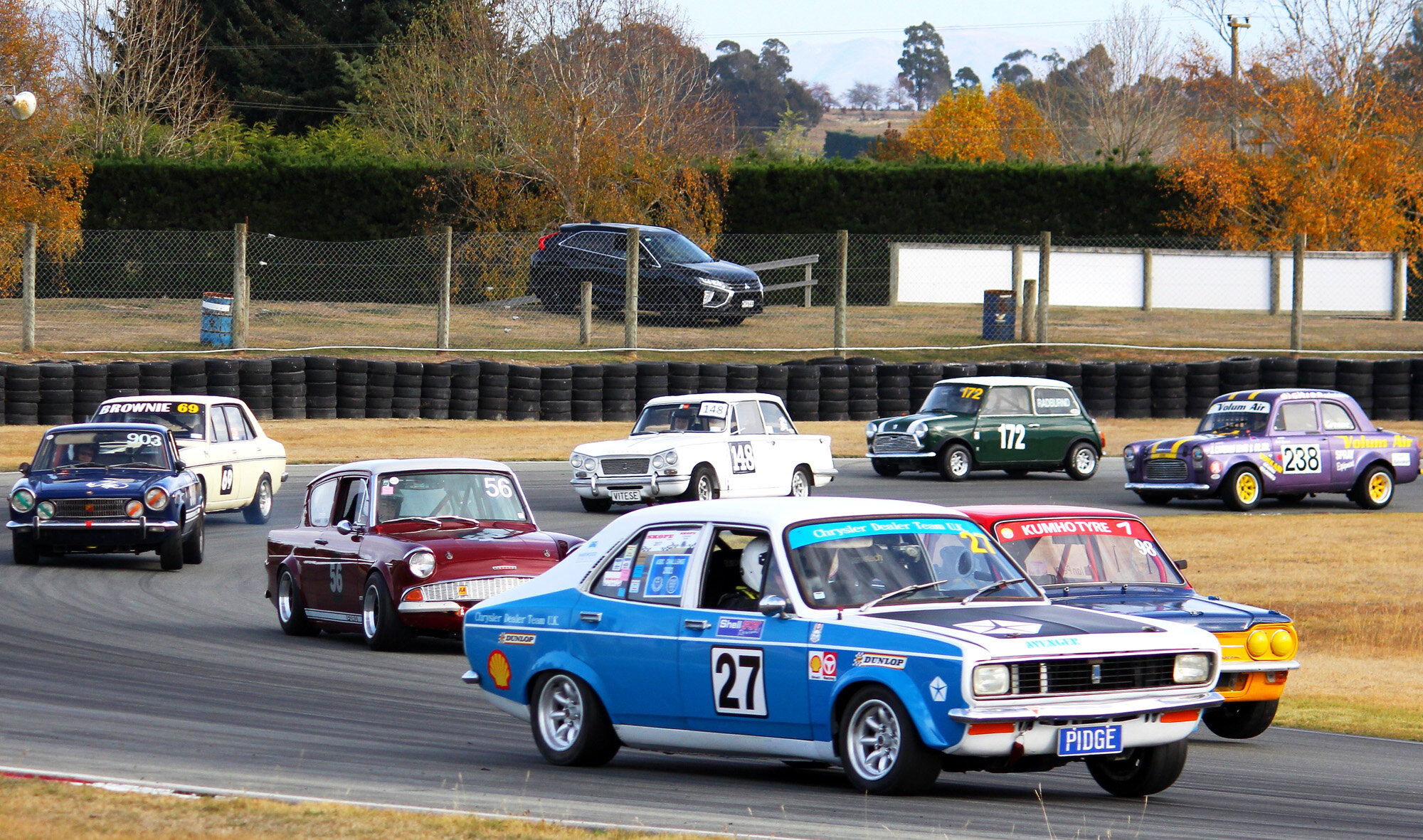
The Anglia’s first race took place in October 2015, at Ngapara Hillclimb, followed by the Waimate 50, and the Highlands Park Classic, Cromwell, in January 2016. Ewan has competed at mainly classic events up and down the country, including some Pre-65 class events, and he enjoys the atmosphere. He says this year’s inaugural Pre-78 Classics race series is something well worth being part of. He is pleased to see a stand being taken after an increasing number of incidents in classic racing recently.
“Wayne Perkins has been a breath of fresh air and has put so much work into it. I remember him in the Queenstown Street Races in a V12 Jaguar. The existing classic thing is getting a bit loose and Schedule 6, T & C rules just don’t apply anymore. One of the best things that has happened is that all cars will have to keep a COD (certificate of description). It still takes a few bob to enter but it costs no more to be racing in a class of cars that all comply with schedule 6, T & C, and have CODs.
“People can see it is a good class and it will bring a lot of cars out of storage. Young people can also see some good racing and take their cars home in one piece. I don’t know where all this crash and bash has come from in the classics.”
Ewan enjoys the atmosphere which has sprung up amongst Pre-78 members and his wife Sue accompanies him to many of the races. There is usually a barbecue or something similar organised at each meeting.

“Sue goes to bigger meetings. It depends on where I go. We used to always be in the same pits with Allister and Beryl Brass until Allister passed away three years ago. He ran a yellow Mini which their daughter Kelly runs now. These cars, the Anglia and his Mini, were built at the same time. He made a really nice job of that Mini. We always tried hard to make each car look the best. Brassy and I used to race together way back some 30 years ago.”
Christchurch’s Craig Pidgeon enjoyed his first season with the Pre-78 class in a very well prepared Hillman Avenger.
“It’s a 1971 GL Avenger and it was built into a race car here in Christchurch by Mark Robinson,” says Craig. “He sold it to Laurence Brown who I then purchased it from in 2014. It had a damaged engine because of an over rev … suspected bent valves, etc. I initially purchased it as parts for my 1973 GLS Avenger as it had a limited slip diff and a trick gearbox, and it also came with a set of fibreglass front guards, boot, and bonnet.”
“I was approached by Wayne Perkins, who is the co-ordinator of a new class especially for the Historic and Classic Pre-78 saloons and he suggested that I could join in with their ranks. There was doubt that I could as I was running with fibreglass panels and 45 profile tyres and I wasn’t prepared to waste the money I had spent going back to steel replacements. He contacted me again after some time to say there was documentation to show that Avengers did run with glass panels and that would be acceptable, with me changing the tyres after I had worn my existing set out … so I joined.”
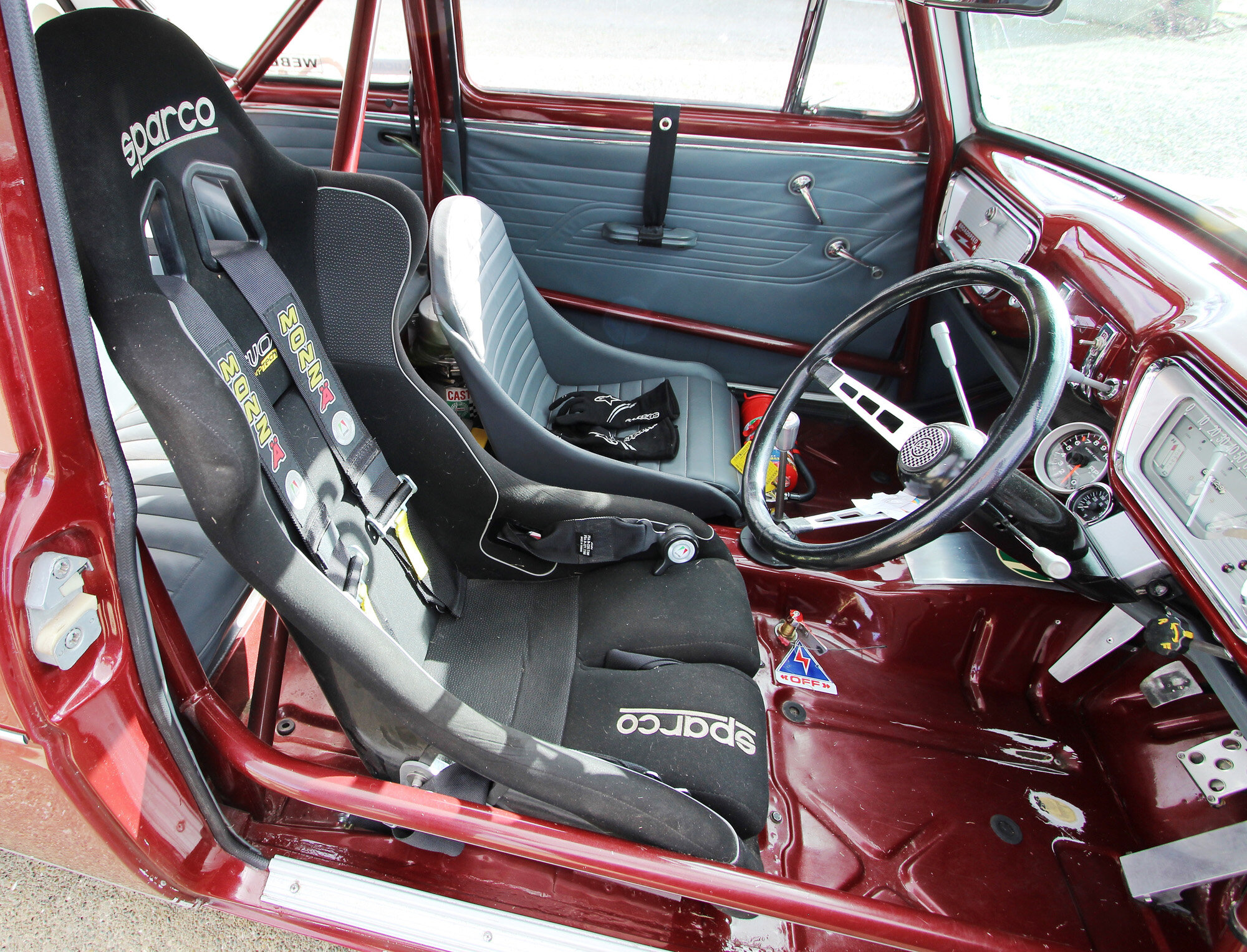
It was then time for a tidy up and the result is a very well presented car and something of a rarity in classic race fields.
“The car then went into Harewood Panel and Paint, where Jason Stevenson and his team assisted me in getting the fitment and painting exactly right, and as you can see from the attached pictures the end result speaks for itself.”
Donn White from Tauranga is another newcomer to the Pre-78 series who will debut this coming season at the first Brooklands meeting at Timaru, on the 4 September, with a genuine Australian-built 1973 Mini Clubman GT, homologated for Bathurst.
“I was the founder of the Proclas series which ran in the North Island from 1978-1980,” he says.
Donn raced an MG Midget in the series, a car that still resides in his garage. He is also the founder of the BMC Classic Car race series and was co-ordinator for the group from 1986-1995. The series morphed into the Inter-marque Classic Car series still running in the North Island today. A great supporter of the new class, he is keen to run the distinctive green and black car at Timaru.
“This car’s motor racing history is documented by Motorsport New Zealand and the Vintage Car Club of New Zealand. There are only around 70 or so known examples of this model left in the world today.”
Hopefully it will be joined by some other well-known southern Minis, such as the Coppertone Mini and the Brink Mini, adding even more great motor racing memories back on track.
This article originally appeared in New Zealand Classic Car issue No. 369


